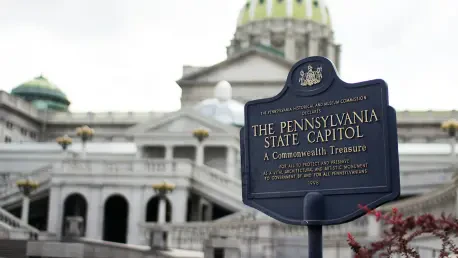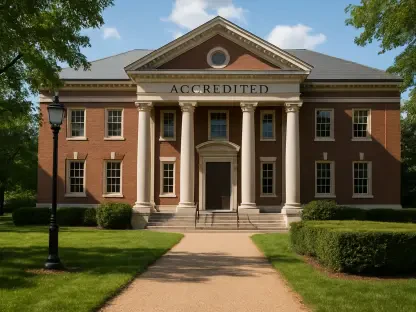As the landscape of higher education continues to evolve in the wake of political and policy shifts, few voices are as insightful as Camille Faivre’s. With her extensive expertise in education management, Camille has been a guiding force for institutions navigating the complexities of open and e-learning programs, especially in the post-pandemic era. Today, we dive into a pressing issue in Pennsylvania, where lawmakers are pushing to prevent state-funded colleges from signing a controversial compact proposed by the Trump administration. Our conversation explores the implications of this agreement, the tension between academic freedom and federal influence, and the broader impact on universities, students, and staff.
Can you start by explaining what this controversial compact from the Trump administration entails and why it’s sparking such heated debate among colleges and lawmakers?
Certainly. The compact is essentially an agreement offered to select research universities, promising them priority access to federal research funding. However, in exchange, institutions must adopt specific policies that touch on admissions, campus operations, and even their public stances on societal issues. For instance, it includes capping international student enrollment at 15% for undergraduates and using what’s described as “lawful force” to manage protests that disrupt academic spaces. The debate stems from the perception that these conditions undermine the independence of universities, forcing them to align with federal priorities over their own missions. It’s seen by many as a trade-off between financial support and autonomy, which is a tough pill to swallow for institutions that value academic freedom.
How do you think the specific requirements of this compact, like limiting international students or mandating responses to protests, could affect a university’s ability to govern itself?
These requirements strike at the heart of a university’s decision-making process. Limiting international students, for example, directly impacts a campus’s diversity and global perspective, which are core to many institutions’ identities. It also affects revenue, as international students often pay full tuition. Mandating the use of force during protests raises concerns about free expression and how campuses handle dissent—something universities have historically managed with dialogue rather than coercion. When external forces dictate such policies, it chips away at the institution’s ability to set its own course, creating a precedent where federal agendas could override academic values.
What do you believe is driving Pennsylvania lawmakers to propose legislation that would block state-funded colleges from signing this compact?
From what I’ve observed, the primary motivation is a deep concern for preserving academic freedom. Lawmakers like those in Pennsylvania see the compact as a direct threat to the independence of higher education institutions. They argue that signing such an agreement could compromise the ability of colleges to make decisions based on educational principles rather than political pressures. There’s also a protective stance toward students and staff, who might face repercussions from policies that limit diversity or suppress dissent. It’s about maintaining a space where learning and inquiry aren’t dictated by external mandates.
How might agreeing to this compact impact the campus environment for students and staff, based on the concerns raised by these lawmakers?
The impact could be profound. For students, especially international ones, a cap on enrollment could mean fewer opportunities to study in the U.S., while domestic students might experience a less diverse learning environment. Staff and faculty could face challenges too—imagine being forced to enforce strict protest policies that conflict with their values or having to navigate a campus culture where speaking out on societal issues is discouraged. It risks creating an atmosphere of constraint rather than openness, which is the opposite of what higher education should foster. There’s also the fear of retaliation or loss of funding if the institution doesn’t comply perfectly, adding stress across the board.
Given that the University of Pennsylvania, one of the invited institutions, receives significant state funding, how do you think this financial tie influences the debate over the compact?
State funding—nearly $32 million for their veterinary school and close to $1.8 million for infectious disease research last year—definitely adds a layer of complexity. It gives lawmakers a stronger voice in urging Penn to reject the compact because public money is involved. The argument is that if taxpayers are supporting the institution, it shouldn’t align with federal policies that might undermine state values like academic independence. This financial connection can be seen as leverage, pushing Penn to consider not just federal incentives but also the expectations of the state that funds critical programs.
Some critics in Pennsylvania have described the compact as a ‘hostile takeover’ rather than a collaborative offer. What’s your take on this strong language?
I think the term ‘hostile takeover’ reflects a belief that the compact isn’t about partnership but about control. It suggests that the federal government is using funding as a carrot to impose policies that universities might otherwise reject. The language paints the compact as an aggressive move to reshape higher education in ways that prioritize political goals over educational ones. It’s a powerful framing because it evokes a sense of loss—of autonomy, of mission—and I believe it’s meant to rally both public and institutional opposition by highlighting the stakes.
Considering Penn’s past agreement with the Trump administration over Title IX and transgender athletes, how do you think that experience might shape their approach to this compact?
That earlier situation, where Penn faced a suspension of $175 million in research funding over policies on transgender women in sports, likely looms large. They ultimately agreed to align with the administration’s interpretation of Title IX and adjusted titles for their swimming team to resolve the issue. This precedent might make Penn more cautious—they’ve seen how federal pressure can directly hit their bottom line. It could push them toward compromise again, fearing further funding cuts, but it might also make them wary of entering another agreement that could erode their autonomy. It’s a balancing act between financial survival and maintaining their principles.
What’s your forecast for the future of academic freedom in light of proposals like this compact and the responses from states like Pennsylvania and California?
I think we’re at a critical juncture for academic freedom. Proposals like this compact signal a growing tension between federal influence and institutional independence, and the pushback from states like Pennsylvania and California shows that there’s a strong counterforce determined to protect higher education’s core values. My forecast is that we’ll see more state-level interventions—whether through legislation or funding threats—to shield colleges from federal overreach. However, the outcome hinges on how universities themselves navigate these pressures. If they band together to resist, we might preserve a space for independent thought, but if financial needs dominate, we risk a slow erosion of autonomy. It’s a battle that will likely define the next decade of higher education policy.









